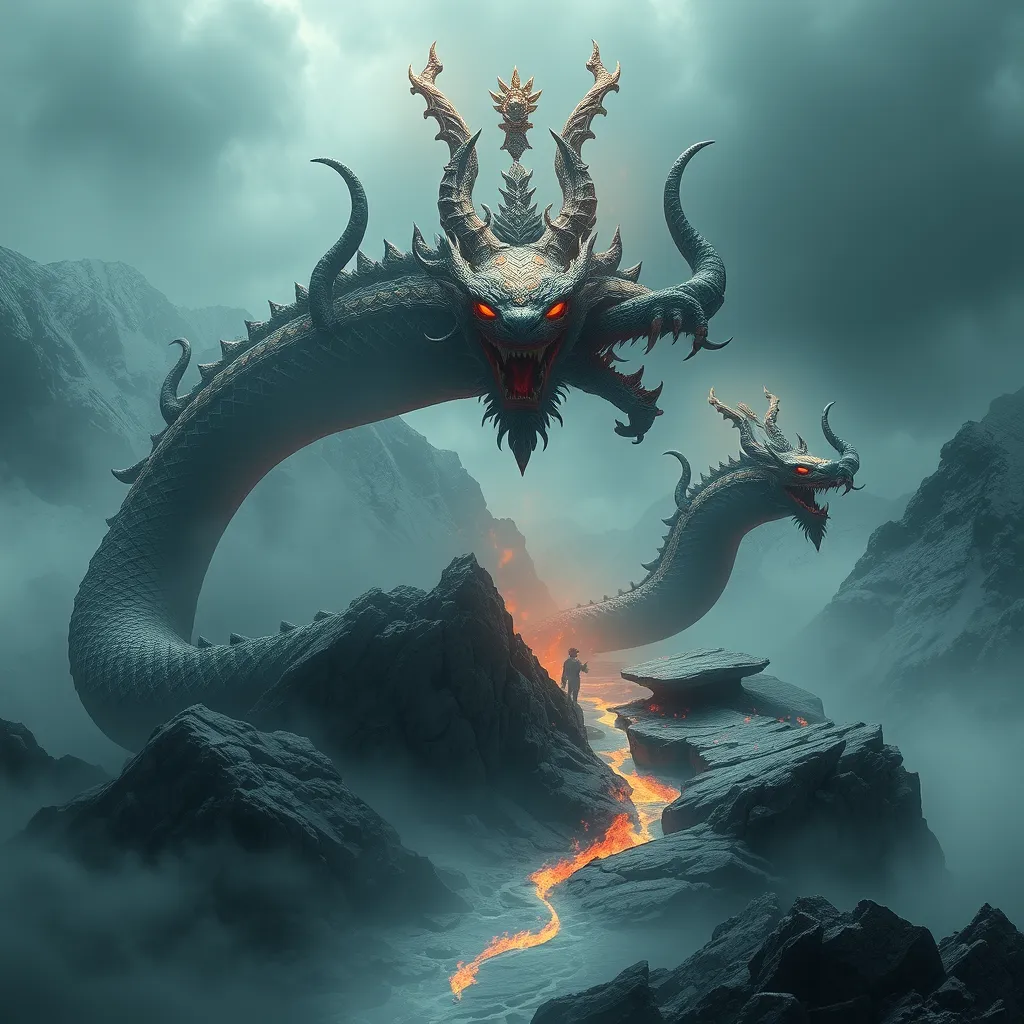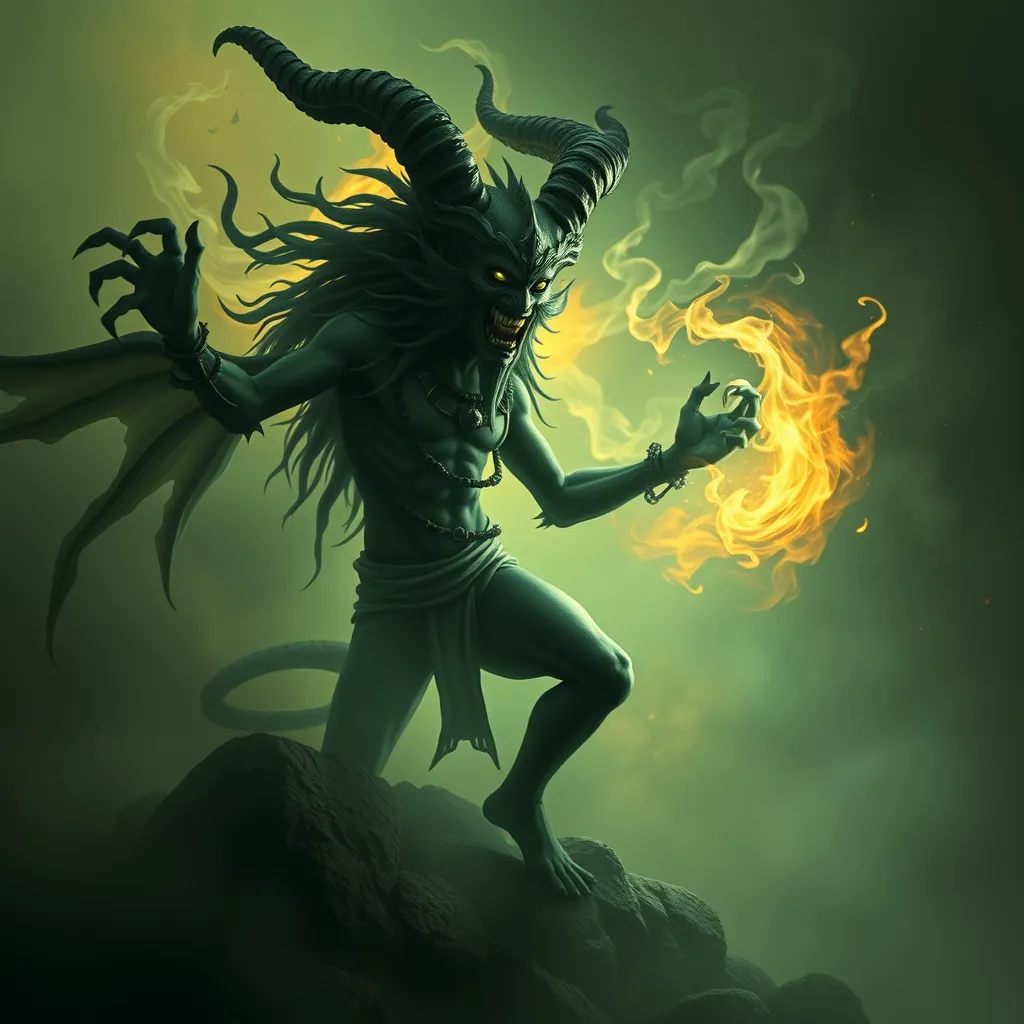Spirits of the Mountains: Naga Legends of the Himalayas
1. Introduction to Naga Legends
Naga legends hold a profound significance in the cultural tapestry of the Himalayas, representing the deep connection between the people, nature, and the spiritual world. These legends, rich in symbolism and meaning, speak of a mysterious race of serpent-like beings known as the Nagas. In many Himalayan communities, Nagas are revered as protectors and deities, embodying the essence of the mountains and the waters that flow through them.
Symbolically, Nagas represent fertility, prosperity, and the intricate balance of nature. They are often seen as mediators between the earthly realm and the divine, playing a crucial role in the local mythology and spiritual practices.
2. The Origin of Naga Myths
The historical roots of Naga legends can be traced back to ancient Himalayan folklore, where they are intertwined with the beliefs and practices of various ethnic groups. These myths have been passed down through generations, evolving yet retaining their core significance.
Nagas are often associated with various religious traditions, including Hinduism and Buddhism. In these contexts, they are seen not only as mythical creatures but also as guardians of sacred spaces and symbols of divine intervention. The legends encapsulate the spiritual essence of the mountains, illustrating humanity’s respect and reverence for the natural world.
3. The Role of Nagas in Himalayan Ecosystems
Nagas play a vital role in the ecological balance of the Himalayan region. They are viewed as guardians of nature and biodiversity, believed to protect water sources, rivers, and agricultural lands. In many cultures, the presence of Nagas is thought to indicate the health of the ecosystem.
- Guardians of Water: Nagas are often associated with rivers and lakes, symbolizing the importance of water in sustaining life.
- Protectors of Agriculture: Local farmers invoke the blessings of Nagas to ensure bountiful harvests and protection from natural calamities.
- Symbol of Biodiversity: The myths surrounding Nagas highlight the interconnectedness of all living beings, emphasizing the need for harmony within the ecosystem.
4. Naga Deities and Their Attributes
Various Naga deities are celebrated in different cultures across the Himalayas, each possessing unique attributes and characteristics. These deities often embody specific aspects of life and nature, highlighting the multifaceted role of Nagas in local mythology.
- Naga Raja: The king of the Nagas, revered for his wisdom and power, often invoked for protection and guidance.
- Manasa Devi: A goddess associated with fertility and healing, worshipped by those seeking blessings for childbirth and health.
- Kaliya: A legendary Naga defeated by Lord Krishna, symbolizing the triumph of good over evil.
The relationship between these deities and various life aspects such as fertility, protection, and prosperity underscores the cultural significance of Nagas in the everyday lives of Himalayan people.
5. Rituals and Festivals Celebrating Nagas
Traditional rituals and festivals dedicated to Nagas play a crucial role in preserving the cultural heritage of Himalayan communities. These celebrations often involve elaborate ceremonies, offerings, and prayers aimed at appeasing the Naga deities.
- Naga Panchami: A prominent festival where devotees worship Nagas, offering milk and prayers for blessings.
- Water Festivals: Ceremonies held at rivers and lakes to honor the Nagas, expressing gratitude for their protection and sustenance.
- Harvest Festivals: Celebrations that include Naga worship, acknowledging their role in ensuring fruitful crops.
These practices not only reinforce community bonds but also serve as a means of transmitting cultural knowledge and values to future generations.
6. Naga Legends in Art and Literature
Naga myths have significantly influenced local art forms, music, and literature throughout the Himalayan region. Artists and writers draw inspiration from these legends, incorporating Naga themes into their works.
- Traditional Paintings: Many local artists depict Naga figures in their artwork, capturing their majestic forms and symbolic meanings.
- Folklore and Storytelling: Oral traditions often include tales of Nagas, preserving the legends in the collective memory of the community.
- Music and Dance: Various forms of music and dance celebrate Naga deities, often performed during festivals and rituals.
These artistic expressions serve as a testament to the enduring legacy of Naga legends, enriching the cultural landscape of the Himalayas.
7. Contemporary Perspectives on Naga Beliefs
In modern society, the perception of Naga legends is evolving. While many continue to uphold these traditions, globalization and tourism have introduced new dynamics to how these beliefs are viewed and practiced.
Some contemporary perspectives include:
- Integration with Modern Spirituality: Many individuals find ways to incorporate Naga beliefs into their modern spiritual practices.
- Tourism and Cultural Exchange: Increased interest in Naga legends has led to cultural exchange, but also poses challenges in preserving authenticity.
- Environmental Advocacy: The association of Nagas with nature has inspired contemporary environmental movements, linking traditional beliefs with modern ecological concerns.
8. Conclusion: The Enduring Legacy of Naga Legends
The legacy of Naga legends remains relevant in today’s world, serving as a reminder of the deep connections between culture, nature, and spirituality. As we navigate the complexities of modern life, these legends offer wisdom and insight into living harmoniously with our environment.
It is essential to preserve these rich cultural narratives for future generations. By honoring the traditions and beliefs surrounding Nagas, we can foster a greater appreciation for the diversity of human experience and the natural world. Embracing the Naga legends not only enriches our cultural heritage but also strengthens our commitment to protecting the ecosystems that sustain us.



